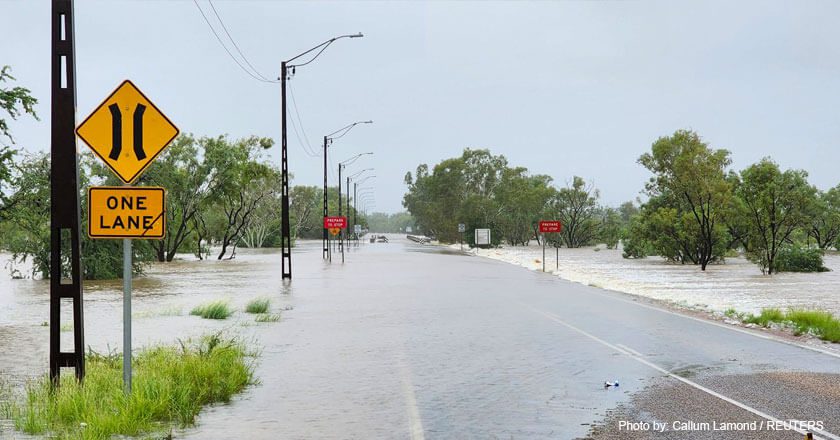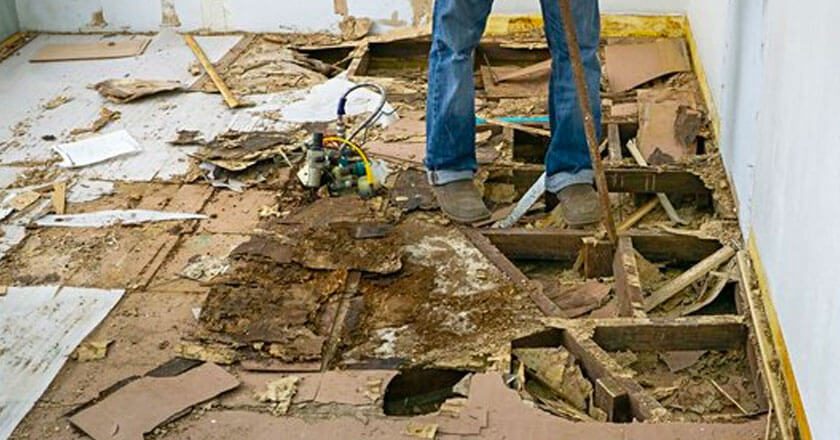5 Things to Consider Thwn Choosing a Flood Protection Barrier
June 15, 2021 | Created by: Andreas Klippe | Comments

Is your area prone to flooding? Are you planning to prepare for this rainy season but you have no idea what flood protection barrier you might need? Of course, what you need is a barrier that can block the entrance of floodwater, but the problem is there are a lot of barriers to choose from.
So to help you determine the right one, here are the things you can consider.
5 Things to Ponder
1. Response Time
HOW FAST DO YOU WANT YOUR FLOOD PROTECTION BARRIERS TO BE DEPLOYED?

If you are worried about quick but horrible downpours that can cause flash floods, you may choose a barrier that can immediately respond to the situation.
There are barriers that will take you only a few seconds to operate. If they are flood barrier doors or gates, you just have to lock them up and you are already protected. There are also barriers that do not require manual operation because they themselves will do the flood protection. All you have to do is to keep yourself safe.
All barriers are lightweight so even manual demountable barriers will be easy to carry and deploy in the case of flooding. Just make sure to do it as fast as you can, so that the barriers can quickly protect you, too.
Despite the limited warning that flash floods could give, choosing a barrier that has a considerable response time could prevent lives from being at stake.
2. Operator(s)
ARE THERE AVAILABLE PEOPLE WHO WILL OPERATE THE BARRIERS?

(Right) Anhamm Self-Activating Flip Up Flood Barriers – does not need operator
For instance, you need a number of barriers, which will be installed in different parts of your huge building. Thus, you also have to consider whether or not you have enough people to manage the barriers.
If you are certain that you have the necessary number of operators for all the barriers, you could pick manual flood barriers. However, if there are not enough people who could deploy the barriers, the automatic ones are your best choice.
For instance, if what you want to flood protect is your house and it is too big, but your household only consists of four people who are always not home or busy, choose the automatic flood barriers. But if you have a big family and some of you always stay at home, choose the manual ones.
3. Number of Entrances
HOW MANY ARE THE ENTRANCES THAT NEED FLOOD BARRIERS?
This is the first thing that you need to consider in choosing your flood protection barriers. Hence, the other four things will follow once you have decided on the number of the entrances.
For example, there are 20 entrances that need barriers: 10 entrances for Location 1 and another 10 for Location 2. Now that you have determined the number of entrances for each location, what you need to consider next is the required number of operators. If you have many entrances and only have limited personnel, choose automatic barriers. Unless you want your flood protection to fail.

You have to consider, at the same time, whether you want your barriers automatic or manual, and whether you have enough people to manage the barriers or not.
The image above gives a good example. It requires only 4 people to install the INERO™ Mobile Flood Barriers within 1 hour (with the blue Polyethylene membrane). But it only takes 10 seconds to close the red Pivot-Hinged Flood Barrier (red flood barrier) by one person.
Therefore, it is necessary to determine the number of entrances that need barriers first, then the others may come second.
4. Mode of Operation
HOW DO YOU WANT YOUR FLOOD PROOFING BARRIERS TO WORK?
Flood barriers can be manual or automatic.

(back in grey) Anhamm Automatic Flood Barrier protecting an underground passage
Some barriers, since they are manually operated, need your presence in order to set them up and make them work. You also have to be there when you want to open or close them.
If manual flood barriers are such a hassle, you can opt for automatic flood barriers.
For automatic flood barriers, you have three choices: semi, fully, and passive.
Semi-automatic ones can work and protect you from flooding by pushing a button or turning a key. Fully automatic barriers activate themselves once their sensors have detected the start of flooding. They require electricity, hydraulics, and pneumatics to self-activate. Lastly, passive flood barriers self-activate due to the buoyant force of floodwater using Archimedes’ Principle. In other words, the flood itself is what triggers the passive barriers to activate.
As an example, locations with no 24/7 manpower, like underpasses, should have automatic flood barriers. Whereas, locations that are manned can have manual flood defense.
5. Structural Provisions
WHAT ARE THE MEASUREMENTS? WHAT BARRIER WOULD FIT INTO THE CURRENT STATE OF THE STRUCTURE?

Different properties have different structural provisions. Some flood barriers can be the best for a certain structure. Let us say you want the whole facade of your building to be flood protected. Let’s assume the length is 50-meter.
That’s very long, isn’t it?
With that dimension, you should also consider the most appropriate barrier that would fit the structural form while not costing you an arm and a leg.
Some structural provisions are also with arcs, sharp corners, slopes, or curbs. In this case, make sure that you get the flood protection barrier that can fit this kind of topography. Image 5 shows such a solution with the INEROTM Mobile Flood Barrier.
Suggestions for Your Target Location
Flood barriers are made to suit and shelter a variety of locations such as residences, industrial sites, or seasides. Below are the suggested barriers appropriate for each given location.

Before or after determining the kind of flood protection barriers you want to have for your target locations, you might want to start a conversation with a Flood Expert who, rest assured, will be able to answer your queries. Just click the “BOOK A MEETING” button.
You can also flood-protect more properties like gas stations, power plants, airports, municipal offices, hospitals, bus depots, national heritage buildings, swimming pools, garden areas, schools, universities, power plants, and transformer stations with this German-engineered flood protection. To download a comprehensive list of locations with more examples, click the “DOWNLOAD THE COMPREHENSIVE LIST” button.






